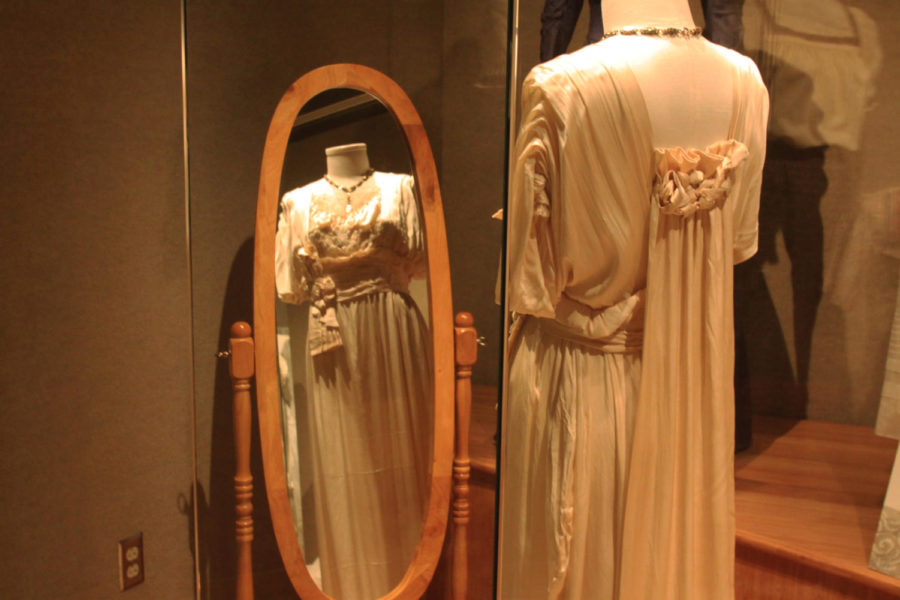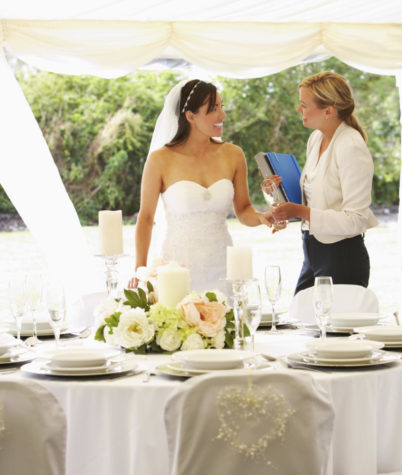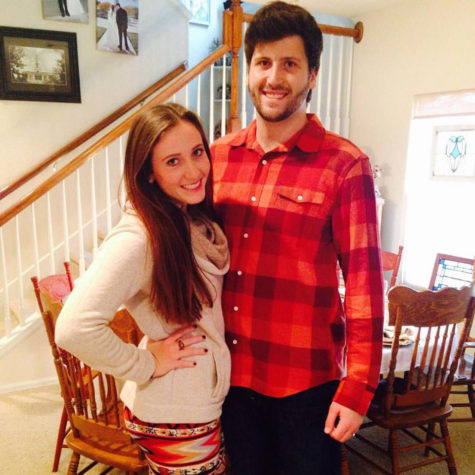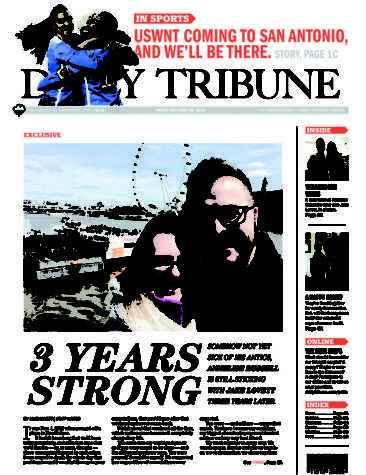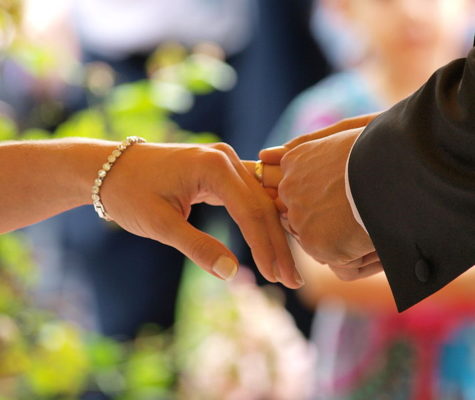Morrill Hall gallery displays historical wedding dresses
February 17, 2011
Sitting on Facebook in Caribou can be a great way to waste your lunch hour, but a much better way to spend your time is just a few steps over in Morrill hall.
The Mary Alice Gallery in 1015 Morrill Hall recently opened up the “Weddings in the Heartland”gallery. The exhibit includes apparel, traditions and memories of past brides from Iowa State or Iowa. It is open to the public from 11 a.m. to 4 a.m. Monday to Friday until April 16.
The exhibit features 19 dresses with over 100 years of history. Some also display the bride and groom together or the mother and daughter dresses.Despite the diversity of apparel, all of the dresses have a connection to Iowa State or the state of Iowa.
“We had to do a lot of research because we wanted good representations of Iowa,” said Janet Fitzpatrick, the manager of the textile and clothing collection and a lecturer in apparel, merchandising, and design.
All of the dresses have a unique story to tell. The exhibit features dresses from the late Victorian era, to the 1920s flapper style, to the seventies hipster, to present day.
One of the very coveted items is a veil from Elizabeth Hoffman, executive vice president at Iowa State. The veil is a unique heirloom that has been passed down and worn by six brides in the Hoffman family. The lace veil actually belonged to Hoffman’s great grandmother, who was the lady-in-waiting in the court of the Russian empress, Tsarina Alexandra Romanov.
“I think it’s fun to hear all the stories when thinking about your own wedding,” said Fitzpatrick, “A bride may think of new traditions or her own family history.”
All dresses are from the textile and clothing collection. Many of the dresses displayed were handmade by the brides themselves or their families.
One of the featured designers is also the guest designer at The Fashion Show 2011. Matthew Christopher Sobaski, apparel, merchandising, and design alum, is currently working in New York City on his own collection, Matthew Christopher, Inc.
The Matthew Christopher dresson display was made in 2009. The oldest dress in the gallery is from 1898.
“Because there is over 100 years of wedding apparel and history, I think it’d be an excellent idea for someone to propose in here,” Fitzpatrick said.
The history within this one room is an intriguing part of the gallery. A dress from the WWII era sticks out because it doesn’t look like the traditional wedding dress; it looks more like a suit.
“At the time, they were rationing silk and other materials,” said Fitzpatrick, “Therefore, it was a sign of patriotism to have a simple suit.”
In earlier times, many women wore a nice dress as their wedding gown and would continue to wear the dress to other occasions throughout their lifetime, Fitzpatrick said.
Another dress from the 1960s was worn by a former ISU professor. The morning of her wedding, she got her masters degree. That same day she was married.
Her housemother cleverly said, “This morning you’re getting your masters, and later you’ll be getting your master.”
Sayings such as this would be unheard of today, but it shows how far we’ve come with women’s rights and related issues.
All of these interesting stories and more are displayed next to each gown.
“Everyday at the gallery, I keep learning new things and stories,” said Fitzpatrick.
Despite all the differences in the dresses and stories, you can still see several timeless parallels.
“[There’s a] huge transition in terms of silhouette and the construction of many dresses,” Fitzpatrick said about the 2009 Christopher dress compared to others, “But it’s interesting to see the similarities as well.”
For example, a row of buttons down the back of many dresses today is common on dresses of the past. The only difference is that today these buttons don’t function like a button. Instead, their function is to hide a zipper.
“Each [dress] is so unique in terms of style and embellishments,” said Fitzpatrick.
Every dress was highly researched. The planning and research process for this exhibit started over a year ago. The team even had to reassemble mannequins, because of the size difference from then to now.
“We had to use some child mannequins because they had 19″ inch waists,” said Fitzpatrick.
Once again, this demonstrates the generation difference from just 100 years ago. Each gown has it’s own piece of history behind it; it’s amazing how much you can learn in one visit.
The Textile and Clothing Museum has about three exhibits a year. This summer it will display the winning Fashion Show 2011 garments. In the fall, it will feature cultural textiles.
“I recommend [this exhibit] because of the combination of the apparel and the stories about tradition,” said Fitzpatrick, “It really brings the apparel to life.”
The “Weddings in the Heartland”gallery also has extended hours: 1 p.m. to 4 p.m. March 6 and 27, and April 9 and 10; it will also show until 3 p.m. April 16 after the VEISHEA parade.
You can share your family’s wedding stories and traditions and look at photos on the Textile and Clothing Museum ISU Facebook page.

